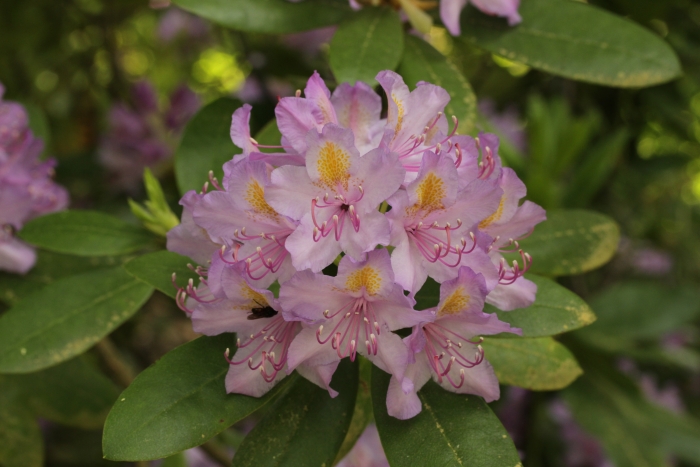Carolina Rhododendron
(Rhododendron carolinianum)
Carolina Rhododendron (Rhododendron carolinianum)
/
/

Björn S...
CC BY-SA 2.0
Image By:
Björn S...
Recorded By:
Copyright:
CC BY-SA 2.0
Copyright Notice:
Photo by: Björn S... | License Type: CC BY-SA 2.0 | License URL: https://creativecommons.org/licenses/by-sa/2.0 | Uploader: Rudolphous | Publisher: Wikimedia Commons | Title: Rhododendron_carolinianum_(41263260375).jpg | Notes: {{Information |Description=''[[Rhus trilobata]]'' in [[Red Rock Canyon]], southern [[Nevada]] |Source=self-made |Date=June 2005 |Author= [[User:Stan Shebs|Stan Shebs]] |Permission=see below |other_versions= }} {{Stan Shebs photo}} {{ImageUpload|bas





























Estimated Native Range
Summary
Rhododendron carolinianum, commonly known as Carolina Rhododendron or Carolina Azalea, is an evergreen shrub native to the Appalachian Mountains, particularly the woodlands and forest edges of the Southeastern United States. It typically grows to a height and width of 3-6 feet (0.9-1.8 meters), forming a dense, mound-like shape. The Carolina Rhododendron is known for its beautiful clusters of bell-shaped flowers, which range in color from pale pink to white and bloom in late spring. The flowers are quite showy and often have a delicate fragrance, attracting pollinators such as butterflies and bees.
This species is valued for its attractive foliage and flowers, which make it a popular choice for woodland gardens, shrub borders, and as a foundation planting. It thrives in acidic, well-drained soils rich in organic matter and prefers a location with dappled sunlight or part shade. Consistent moisture is important, but the soil should not be waterlogged. Mulching helps retain soil moisture and keeps roots cool. Carolina Rhododendron is relatively low maintenance but can be susceptible to pests like lace bugs and diseases such as root rot if conditions are too wet. It is also sensitive to high heat and humidity, so it may not perform well in the hottest areas of its growing range.CC BY-SA 4.0
This species is valued for its attractive foliage and flowers, which make it a popular choice for woodland gardens, shrub borders, and as a foundation planting. It thrives in acidic, well-drained soils rich in organic matter and prefers a location with dappled sunlight or part shade. Consistent moisture is important, but the soil should not be waterlogged. Mulching helps retain soil moisture and keeps roots cool. Carolina Rhododendron is relatively low maintenance but can be susceptible to pests like lace bugs and diseases such as root rot if conditions are too wet. It is also sensitive to high heat and humidity, so it may not perform well in the hottest areas of its growing range.CC BY-SA 4.0
Plant Description
- Plant Type: Shrub
- Height: 3-6 feet
- Width: 3-6 feet
- Growth Rate: Moderate
- Flower Color: White, Pink
- Flowering Season: Spring
- Leaf Retention: Evergreen
Growth Requirements
- Sun: Part Shade
- Water: Medium
- Drainage: Medium, Fast
Common Uses
Bee Garden, Bird Garden, Butterfly Garden, Fragrant, Groundcover, Hummingbird Garden, Low Maintenance, Rabbit Resistant, Showy Flowers
Natural Habitat
Woodlands and forest edges of the Appalachian Mountains in the Southeastern United States
Other Names
Common Names: Carolina Rhododendron
Scientific Names: , Rhododendron carolinianum, Rhododendron carolinianum var. margarettae, Rhododendron carolinianum var. margarettii, Rhododendron margarettae, Rhododendron minus var. margarettae,
GBIF Accepted Name: Rhododendron carolinianum Rehder